What kid (or kid at heart) doesn’t love to play with slime? Play foam provides a kind of sensory play which engages a kid’s senses, stimulates creativity, and even encourages a calming, in-the-moment effect.
Tactile and gooey, slime also triggers a child’s curiosity – the texture occupies an oddly fascinating middle ground between solid and liquid.
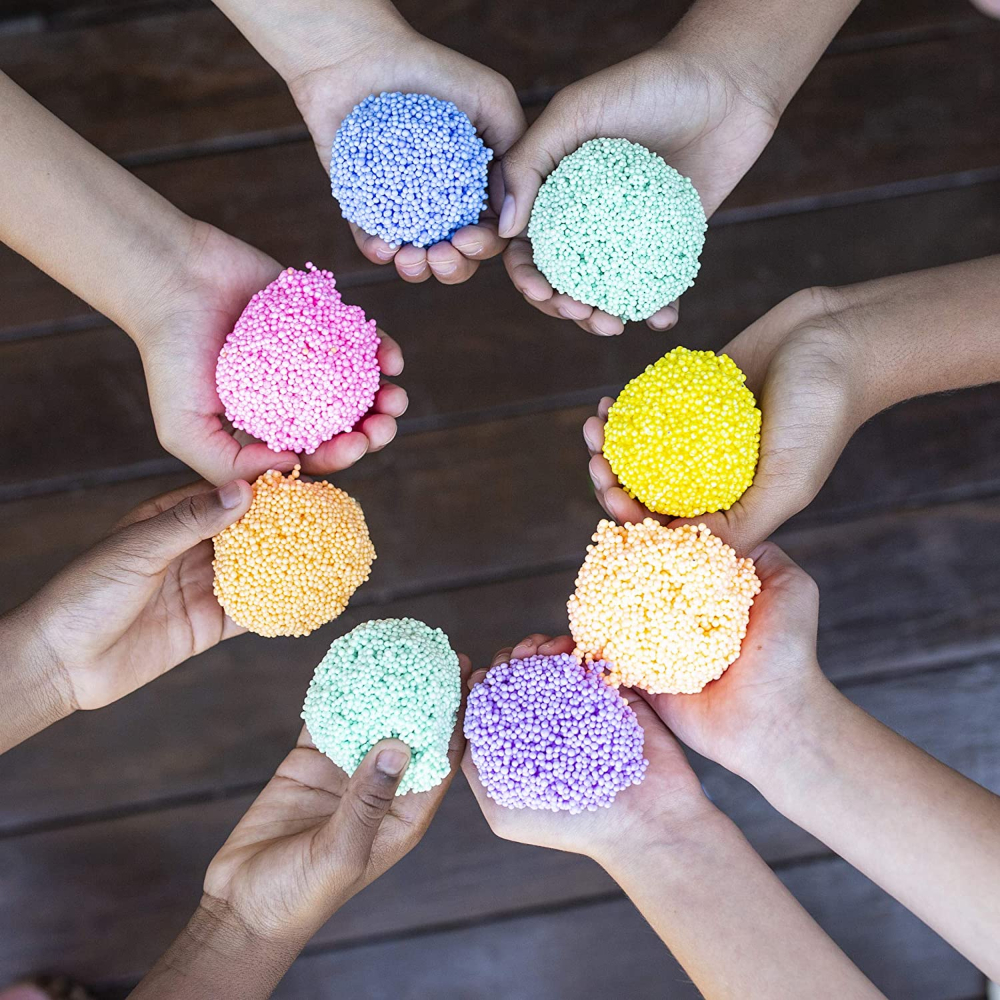
And then, of course, there are those undeniable fart noises when you push your fingers into the slime pot.
There are all sorts of slime recipes for you to try out there and we’ve got something that you and your kids are bound to love – foam slime!
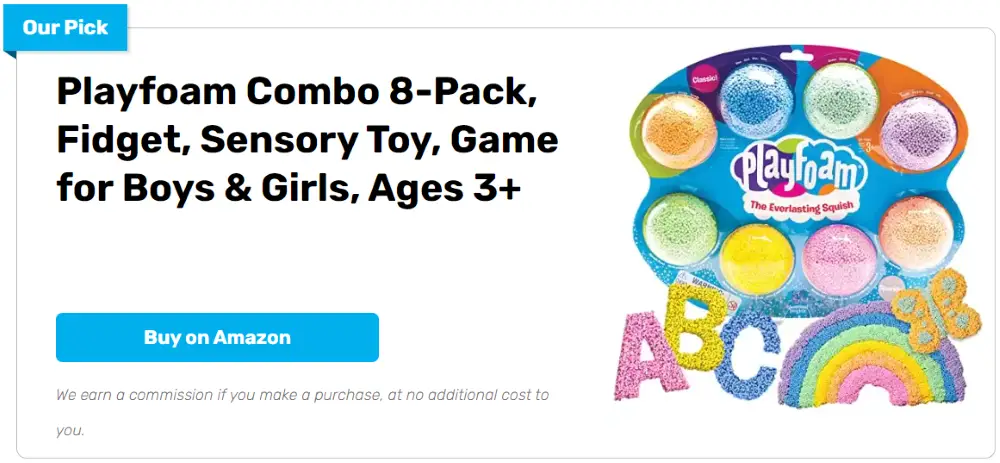
Also called play foam, this slime comes with an amazing texture that regular slimes don’t have. Doesn’t it look like running your hands through it will be so satisfying?
Play Foam is a unique material that is both soft and moldable. It is a non-toxic, flexible foam that is pliable and soft. Also used to make a variety of shapes and figures.
Play Foam is a versatile material that can be used on any hard surface and can be used for a variety of projects and can be used for arts and crafts, home décor, and even furniture.

This project calls for your usual slime materials with the addition of small styrofoam balls. If you’ve got some styrofoam from a package or cups, you can just use those instead of buying from the store.
If you can’t find any styrofoam balls, take a look at this recipe for a fluffy unicorn slime instead! Or you know, you could always make both of them… ;)

You can make different batches of different colors, too! Isn’t this a fun project to do with the kids?
Contents
Making a Play Foam
Materials
- 1/4 cup school glue
- 1/4 cup warm water
- 1/2 cup hot water
- 2 tsp borax
- Food coloring
- Polystyrene or styrofoam balls
Tools
- Popsicle stick (for mixing)
- Large bowl (for mixing)
- Spoon
Instruction
- Prepare the Glue Mixture:
- In the large bowl, mix 1/4 cup of school glue with 1/4 cup of warm water. Use the spoon to stir the mixture until it is smooth.
- Add Color:
- Add a few drops of food coloring to the glue mixture. Use the popsicle stick to stir the color into the glue until you achieve a uniform color. You can mix different colors to create your own unique shades.
- Mix the Borax Solution:
- In a separate container, dissolve 2 teaspoons of borax into 1/2 cup of hot water. Stir well until the borax is completely dissolved. This creates your activating solution.
- Combine the Mixtures:
- Slowly add the borax solution to the glue mixture, stirring continuously with the popsicle stick. As you stir, the mixture will begin to thicken and form into a slimy texture.
- Incorporate the Styrofoam Balls:
- Gradually mix in the polystyrene or styrofoam balls into the thickened slime. Use your hands to knead the balls into the mixture, ensuring they are evenly distributed throughout the floam. Add as many styrofoam balls as you like, depending on the texture you prefer.
- Finalize the Floam:
- Continue to knead the floam by hand until it reaches a consistency that you’re happy with. If the floam feels too sticky, you can add a tiny bit more borax solution. If it’s too stiff, add a little more glue.
- Play and Create:
- Once your floam is ready, it’s time to play and create! Mold it into shapes, create models, or simply enjoy the unique texture.
Making floam is a fun project. It’s also a bit of a pain, so make sure you have plenty of time on your hands when you try it.
Benefits of Sensory Play
Sensory play is a crucial part of child development, engaging their senses in activities that naturally encourage learning and exploration. Play foam, with its unique texture and moldability, offers an excellent opportunity for sensory play.
Here are some benefits of incorporating sensory play, like play foam, into a child’s routine.
Enhances Cognitive Growth
Sensory play, especially with materials like play foam, is a rich source of cognitive stimulation for children. As they engage in hands-on activities, they encounter a variety of sensory attributes such as temperature (hot, cold), textures (sticky, dry), and consistencies. This direct interaction with different materials helps to activate different areas of the brain, leading to enhanced sensory processing skills.
For instance, as children squeeze and mold play foam, they begin to understand and differentiate between soft and hard, light and heavy, which are fundamental concepts in their cognitive development. The varied experiences provided by play foam stimulate curiosity, encouraging children to ask questions and explore answers, thus deepening their comprehension of the world around them.
This type of play is not just about touching and feeling; it’s a doorway to learning concepts like cause and effect, trial and error, and problem-solving, laying the foundation for lifelong learning.
Boosts Fine Motor Skills
Manipulating play foam is an excellent exercise for developing fine motor skills in children. The actions involved in playing with foam – pinching, rolling, sculpting – require children to use the small muscles in their hands and fingers. These movements are crucial for developing hand-eye coordination and agility, essential for everyday tasks such as writing, buttoning clothes, and tying shoes.
Regular play with materials like play foam can significantly enhance these skills, making tasks that require precision easier for children to accomplish. Furthermore, as children become more adept at manipulating the foam to create shapes and figures, they gain confidence in their abilities.
This confidence can translate into a greater willingness to engage in new activities, further promoting their fine motor skill development. The repetitive nature of these actions, combined with the enjoyable sensory experience of play foam, makes it an effective and engaging way to strengthen these essential skills.
Promotes Emotional Regulation
The tactile experience of play foam can have a profound calming effect on children. The act of pressing, squishing, and molding the foam is physically engaging and emotionally soothing. This sensory activity serves as a constructive outlet for children to express their feelings, helping them to manage emotions such as frustration, anger, or excitement in a controlled environment.
The soothing nature of sensory play with play foam can significantly reduce anxiety levels, making it easier for children to focus and regain their calm during moments of overwhelm. This emotional regulation is crucial for children’s overall well-being and helps them develop coping mechanisms essential for navigating challenges in childhood and later in life.
By incorporating play foam into their routine, children learn to associate this form of play with relaxation and emotional balance, fostering resilience and emotional intelligence.
Encourages Language Development
Sensory play with play foam is a physical activity and a rich linguistic opportunity. As children manipulate the foam, they are often encouraged to articulate their experiences, describe their actions, and express their ideas. This interaction can significantly boost their language development.
For example, discussing the colors, shapes, and textures they encounter introduces new vocabulary and concepts, enhancing their ability to communicate more effectively. Moreover, as children play with play foam, the social interaction further promotes language skills through conversation, negotiation, and storytelling.
This interactive play environment fosters a natural and enjoyable way for children to learn and practice new words, phrases, and language structures, contributing to their linguistic abilities. Engaging in play foam activities can thus play a pivotal role in enriching a child’s vocabulary and sharpening their communication skills, setting a strong foundation for future learning and social interactions.
Play foam ideas for your kids
Click on any image to start the lightbox display. Use your Esc key to close the lightbox. 😎

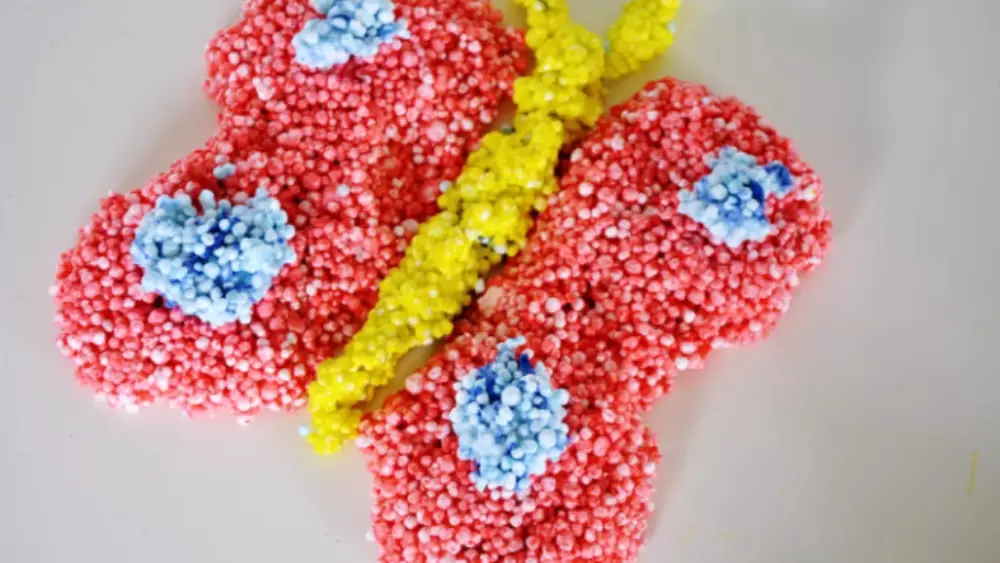
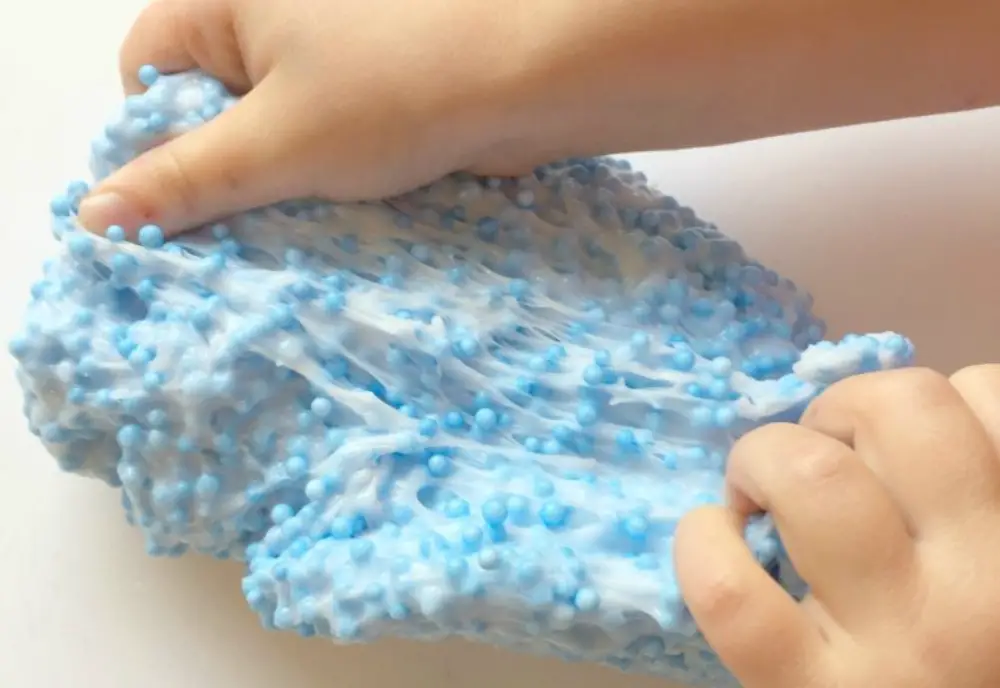

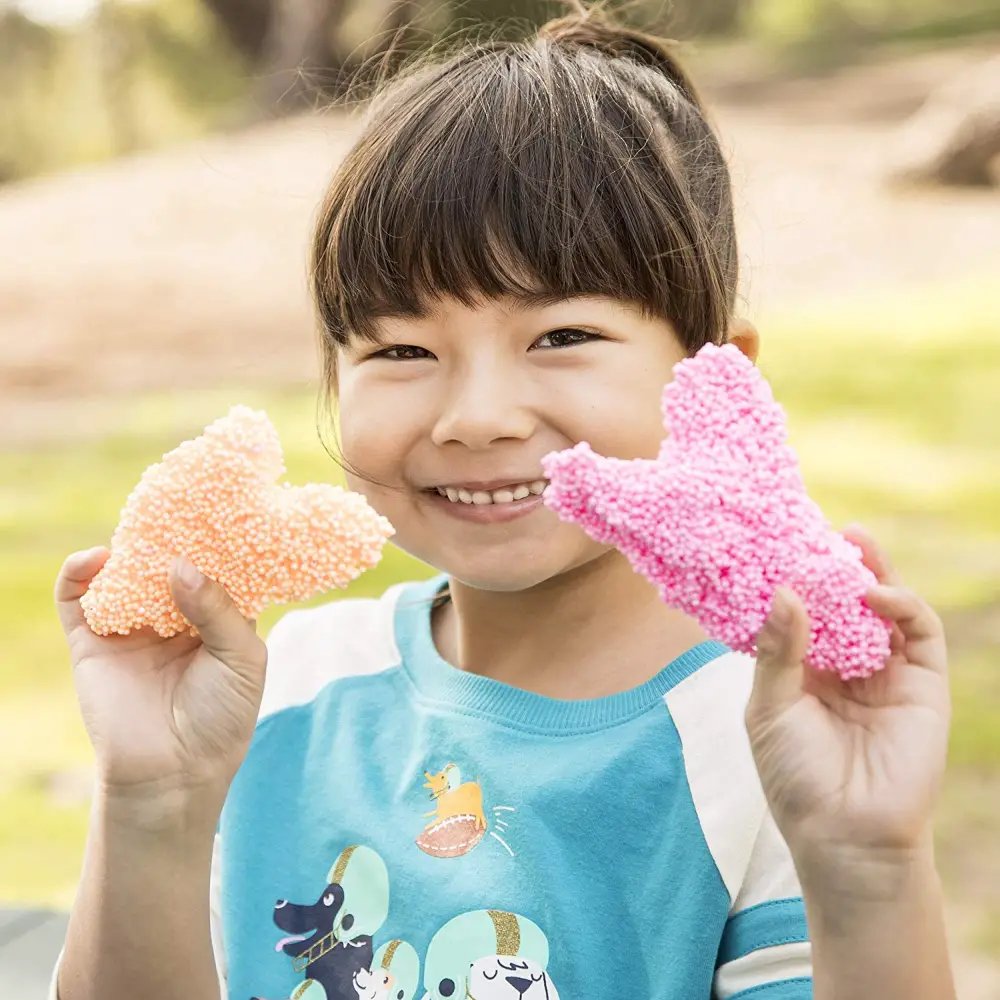
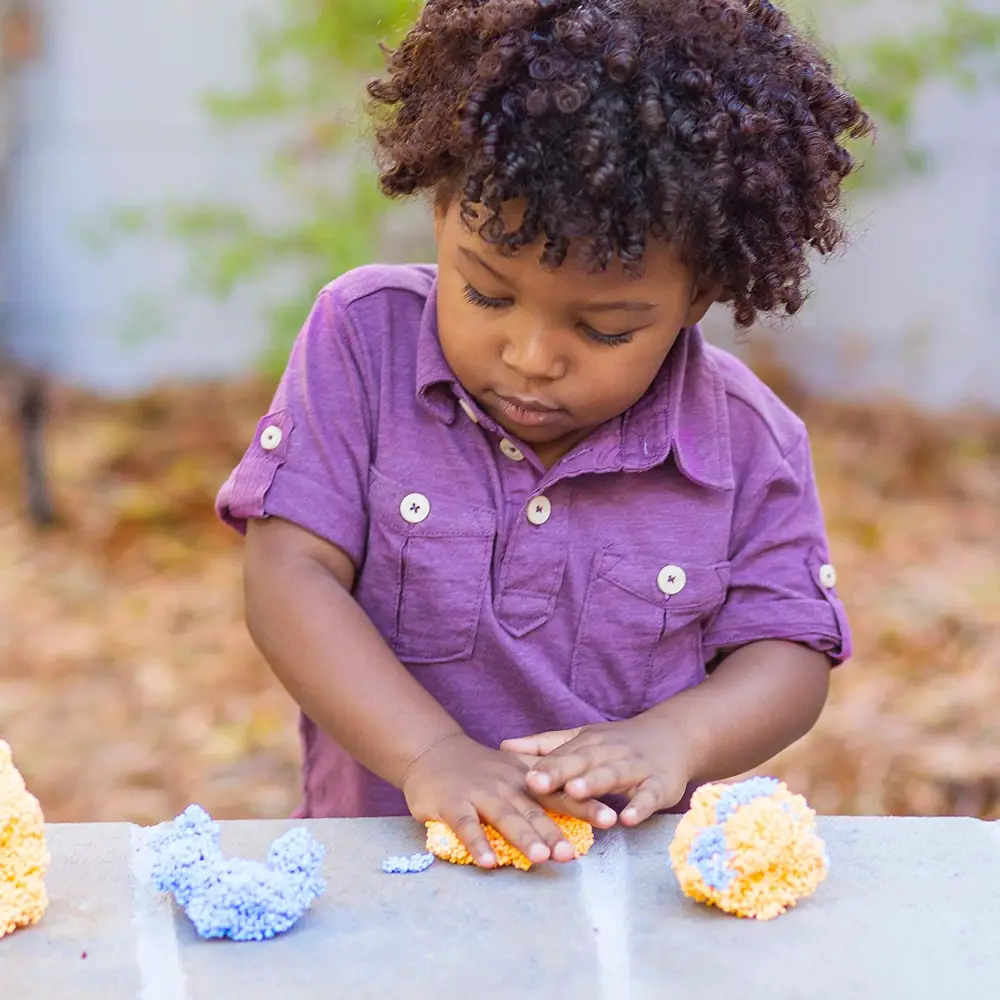
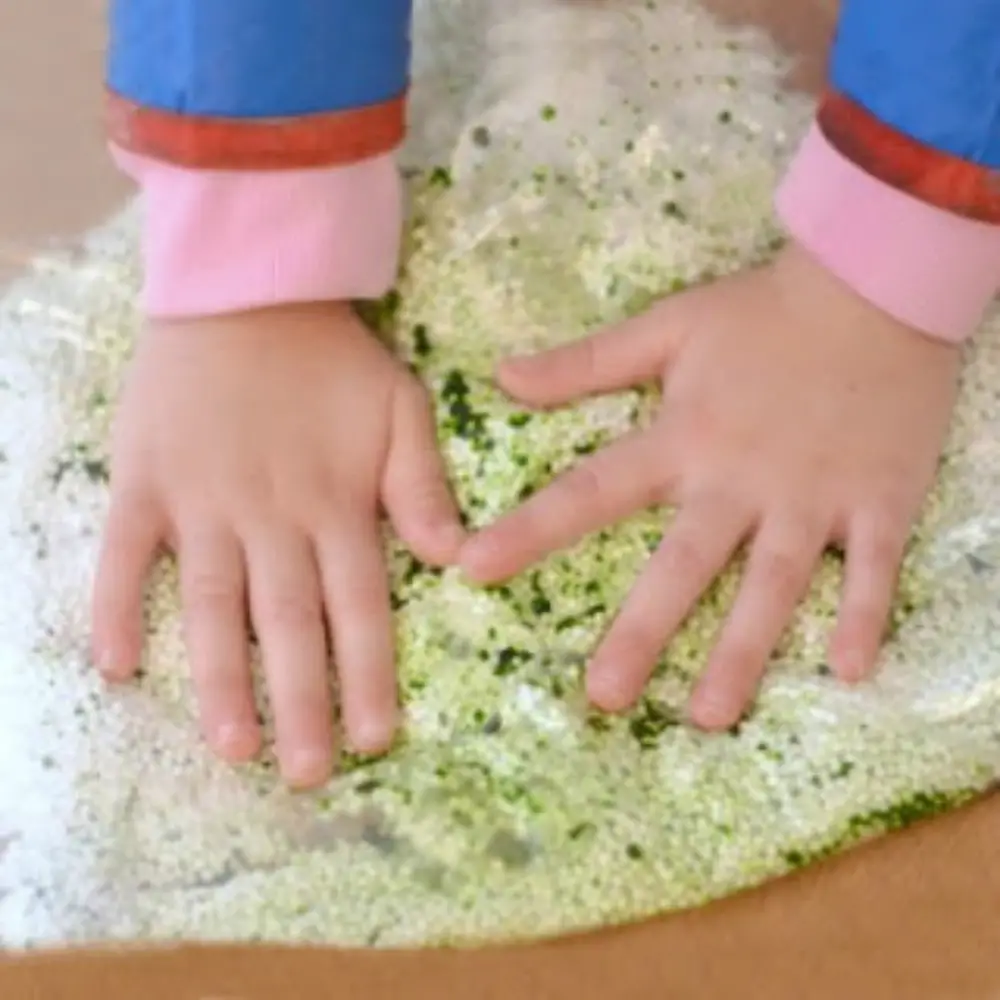

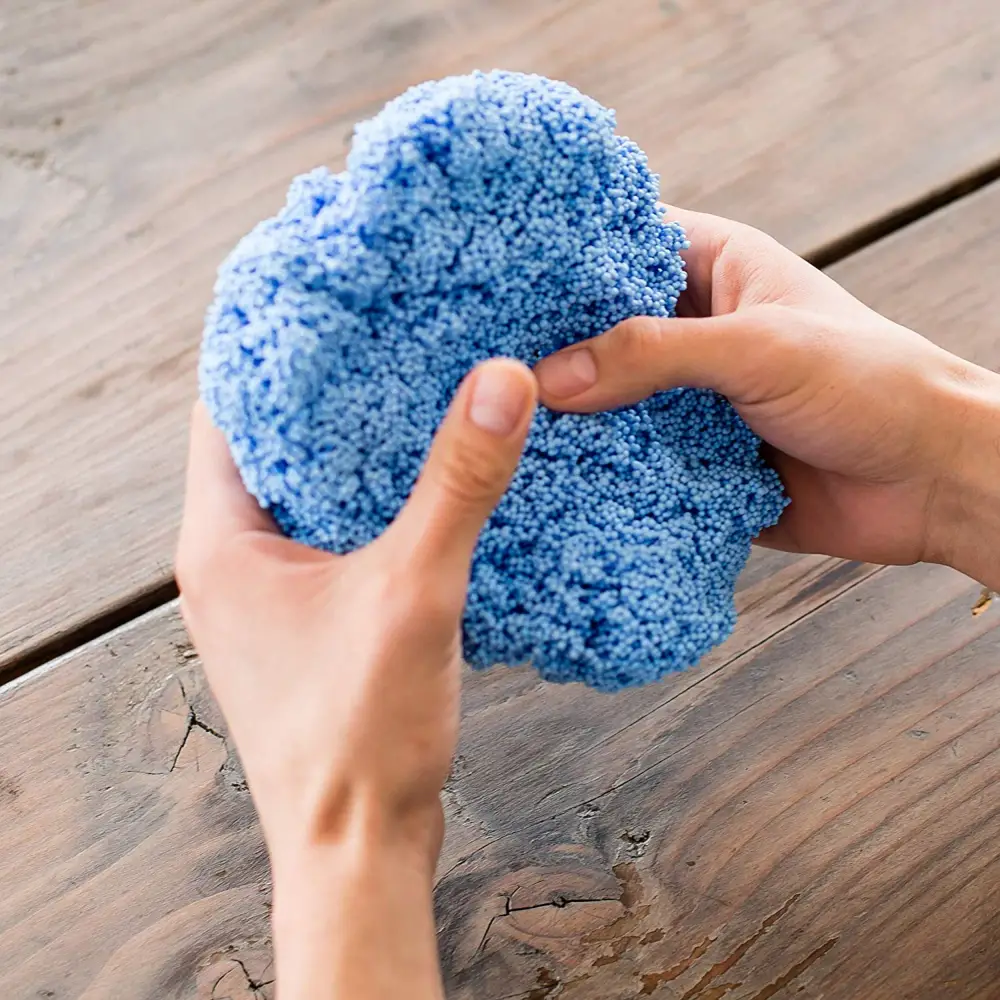
Creative Projects Using Play Foam
Creative projects using play foam offer endless possibilities for fun and learning. This versatile material can be used in various crafts and activities, encouraging children’s creativity and imagination. Here are some innovative ideas to get started.
Create Your Miniature World
Children can use play foam to build their miniature worlds. Whether it’s a bustling city, a magical fairy garden, or a distant planet, play foam can be shaped into buildings, landscapes, and creatures. This activity sparks creativity and encourages storytelling as children invent stories about their creations.
Make Play Foam Art
Encourage children to express their artistic side by using play foam as a medium for art projects. They can flatten the foam to create a canvas and add details by pressing in different colors and shapes. This type of project is great for exploring color mixing and texture, and the results are unique pieces of art that can be displayed and cherished.
Educational Games
Play foam can be used to create educational games that make learning fun. For example, children can form letters, numbers, or shapes with the foam, helping them with alphabet and number recognition and shape identification. Parents and educators can also create simple puzzles by embedding small objects within the foam for children to find, enhancing their problem-solving skills.
DIY Jewelry and Accessories
Kids can design their jewelry and accessories, such as bracelets, necklaces, and rings, with play foam. Mixing colors and adding details like beads or glitter can make each piece unique. This project allows for personal expression and develops fine motor skills as children manipulate the foam to create their desired designs.
Science Experiments
Incorporate play foam into simple science experiments to explore concepts like buoyancy and density. For instance, children can create boats out of play foam and test their ability to float in water. They can also experiment with mixing colors or combining play foam with other materials to observe reactions, fostering a love for science through hands-on learning.
Seasonal Decorations
Play foam is perfect for crafting seasonal decorations. Children can create ornaments, wreaths, and other decor for holidays and celebrations. This activity can become a fun family tradition, with each member contributing their play foam creation to the seasonal display.
These creative projects with play foam are not just entertaining; they’re educational, offering opportunities for sensory play, cognitive development, and artistic expression. So, grab some play foam and let the creativity flow!
In conclusion, making Floam is a fun, hands-on way to learn about basic chemistry. It’s simple, easy, and doesn’t require a lot of expensive equipment. It requires a little bit of patience, but the results are worth it.
Safety Tips for Making and Playing with Floam
Safety is paramount when making and playing with floam, especially since children are involved. Here are some essential safety tips to ensure a fun and secure experience.
Use Non-Toxic Ingredients
When selecting ingredients for your floam recipe, prioritizing non-toxic materials is essential for ensuring children’s safety. Given the likelihood of kids touching their faces or putting their hands in their mouths during play, the risk of ingesting harmful substances is a concern. To mitigate this risk, carefully read the labels of all potential ingredients, such as glue, borax, and coloring agents, to ensure they are labeled as non-toxic and suitable for use by children.
Additionally, consider the environment where the play foam will be used and opt for eco-friendly and safe disposal ingredients. If in doubt, seek out recipes designed for young children, often using safer alternatives to traditional floam components. Parents and educators can create a more secure play environment by choosing the safest possible materials, allowing children to explore and enjoy without unnecessary risks.
Supervise Young Children
Supervising young children during floam play is crucial to prevent accidental ingestion of the material or its components, which can be hazardous. Close supervision helps promptly address children’s attempts to taste the floam or put it in their noses or ears, which is common exploratory behavior in young kids.
This vigilance is not only about preventing accidents but also about fostering a safe space for children to be imaginative and explore the sensory experiences floam offers under the guidance of an adult. Through active engagement, adults can encourage children’s creativity, teaching them how to mold and shape the floam while emphasizing the importance of safety and cleanliness. Thus, Supervision becomes an opportunity for interactive learning, ensuring that playtime with floam is safe and enriching.
Allergy Checks
Before engaging in floam activities, assessing for any potential allergies to floam ingredients is vital, as individual sensitivities can vary widely. Common components like borax, glue, and even certain dyes used for coloring can trigger allergic reactions in some children.
To mitigate this risk, conducting a patch test is a prudent step. This involves applying a small amount of the mixed ingredients to a discreet area of the child’s skin and monitoring for any adverse reactions, such as redness, itching, or swelling, typically within 24 hours.
If you have any concerns about allergies or if the child has a history of skin sensitivities, consulting with a healthcare provider before proceeding with floam creation can offer additional safety assurances. This proactive approach ensures that the fun and educational experience of playing with floam remains a safe activity for every child involved.
Clean Work Area
Maintaining a clean and well-ventilated work area is crucial when making and playing with floam. This helps safeguard the health and safety of the children involved and ensures a pleasant play experience.
Start by choosing an easily washable work surface or protect surfaces by covering them with newspapers, a plastic sheet, or a disposable tablecloth. This preparation facilitates a quick and stress-free cleanup process, preventing the floam mixture from adhering to surfaces and potentially causing damage or requiring extensive cleaning.
Additionally, ensuring the space is well-ventilated is important, particularly if any ingredients have strong odors that could be overwhelming or irritating in enclosed spaces. Proper ventilation helps disperse fumes and maintains a fresh environment, creating a more enjoyable and safer crafting experience. By taking these simple yet effective steps, parents and educators can create an optimal setting for children to explore their creativity with floam without worrying about messes or exposure to harmful substances.
Wash Hands
Instilling the habit of washing hands before and after engaging with floam is a simple yet effective measure to promote hygiene and safety. Before play begins, clean hands can significantly reduce the transfer of germs to the floam, ensuring that the play material remains as clean as possible. This is particularly important when the floam is shared among multiple children, as it can become a vector for germs and bacteria.
After the play, washing hands thoroughly with soap and water helps to remove any residual floam material, dyes, or chemicals that could cause skin irritation or allergic reactions from prolonged exposure. This practice also teaches children the importance of cleanliness and personal hygiene, reinforcing habits contributing to their overall health and well-being. By making handwashing a non-negotiable part of the floam play routine, parents and educators can safeguard children’s health while keeping the play environment clean and safe.
Avoid Eating or Drinking Near Floam
To ensure the safety of children during playtime with floam, it is crucial to enforce a strict rule against eating or drinking in the vicinity of the play area. This precaution helps to prevent the accidental ingestion of floam pieces or its components, which can be small enough to go unnoticed but pose significant health risks if swallowed.
The tactile nature of floam means that it easily picks up and holds onto particles, making it possible for these to transfer to food and beverages. Such incidents could lead to choking hazards for children or the consumption of substances that are not intended for ingestion, potentially leading to health complications. By clearly separating play areas and eating areas, caregivers can significantly reduce the risk of such accidents and ensure a safer play environment for everyone involved.
Proper Storage
Storing floam correctly when it’s not in use is essential for maintaining its quality and longevity. Utilizing airtight containers for storage prevents the floam from being exposed to air, which can cause it to dry out and lose its unique texture and moldability. Clearly labeling these containers with the date of creation and contents helps manage the floam inventory, making it easier to identify and choose the desired batch for play.
Additionally, storing these containers out of the reach of young children and pets is critical to avoid unsupervised access, which could lead to accidental ingestion or mess. This practice not only keeps the floam ready for the next use but also contributes to a tidy and organized play environment, ensuring that the materials remain in good condition for as long as possible.
Dispose of Old Floam Properly
Floam’s lifespan is not infinite; over time, it can start to degrade, losing its color, texture, or cleanliness. Once floam reaches this stage, it’s important to dispose of it responsibly. Flushing it down the toilet or sink is strongly discouraged as floam can easily cause plumbing blockages, leading to potentially costly repairs and environmental harm. Instead, the preferred disposal method is to place it in the trash.
Proper disposal ensures that old floam is handled per local waste management policies, minimizing environmental impact. Proper disposal of old floam addresses hygiene and safety concerns and teaches children the importance of responsible waste management, instilling values of environmental stewardship from an early age.
Following these safety tips ensures that making and playing with floam is safe and enjoyable for everyone involved.
Conclusion
Making play floam at home offers a fantastic opportunity for hands-on fun and learning. This simple DIY project not only encourages creativity and sensory exploration but also teaches basic science principles through the mixing of ingredients. With easy-to-follow steps and common household materials, you can create a squishy, colorful floam that provides endless entertainment for kids and adults alike.
Get your kids involved in more project! Check out our guide on making your own DIY bean bag chair next!





